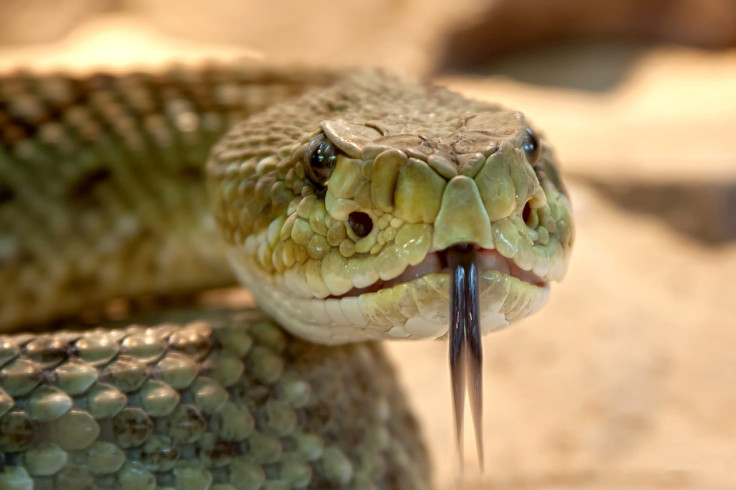Most Dangerous Animal In The World: The Menace Posed By Mosquitoes

From apex predators to tiny yet venomous creatures, there are several animals that can pose significant risks to humans. Identifying dangerous animals can benefit you, as your knowledge would also teach you how to protect yourself. In fact, the most dangerous one may not be what you have been expecting.
Most dangerous animals in the world
You might be surprised to know that the diminutive mosquito reigns as the deadliest creature on the planet, taking 780,000 lives each year. These insatiable pests disseminate debilitating illnesses like malaria, dengue fever, Zika virus, and West Nile virus, mainly through their bites. Despite the preventability or treatability of most mosquito-borne diseases, they persist in wreaking havoc on worldwide public health, particularly in tropical and subtropical zones.
Malaria, dengue, Zika virus and West Nile
Malaria is a potentially life-threatening disease caused by parasites of the Plasmodium genus. It is transmitted to humans through the bites of infected female Anopheles mosquitoes. The parasites multiply in the liver and then infect red blood cells, leading to symptoms such as fever, chills, sweats, headaches, nausea, and vomiting. If not promptly treated, malaria can cause severe complications and even death. Malaria is a significant public health concern, particularly in tropical and subtropical regions of the world, where the Anopheles mosquito thrives.
Meanwhile, dengue fever is a viral infection transmitted primarily by Aedes mosquitoes, particularly Aedes aegypti and Aedes albopictus. The virus that causes dengue fever belongs to the Flaviviridae family and has four distinct serotypes (DEN-1, DEN-2, DEN-3, and DEN-4). Dengue fever is prevalent in tropical and subtropical regions around the world, especially in urban and semi-urban areas. Symptoms of dengue fever typically include high fever, severe headache, pain behind the eyes, joint and muscle pain, fatigue, nausea, vomiting, and rash. In some cases, dengue fever can progress to a more severe and potentially life-threatening form known as dengue hemorrhagic fever or dengue shock syndrome. Currently, there is no specific treatment for dengue fever.

The Zika virus is a flavivirus transmitted primarily through the bite of infected Aedes mosquitoes, particularly Aedes aegypti and Aedes albopictus. It can also spread through sexual contact, blood transfusion, and from mother to fetus during pregnancy. The virus gained global attention in recent years due to outbreaks in various regions. Most people infected with the Zika virus do not show symptoms or experience only mild symptoms, which can include fever, rash, joint pain, muscle pain, headache, and conjunctivitis (red eyes). However, Zika infection during pregnancy can lead to severe birth defects, including microcephaly (a condition where babies are born with abnormally small heads and underdeveloped brains) and other neurological abnormalities in infants.
The West Nile virus (WNV) is a flavivirus belonging to the same family as the Zika virus and the dengue virus. It is primarily transmitted to humans through the bite of infected mosquitoes, particularly species of the Culex genus, which can become infected after feeding on infected birds. Most people infected with the West Nile virus do not experience any symptoms. However, around 20% of those infected may develop West Nile fever, characterized by symptoms such as fever, headache, body aches, joint pains, vomiting, diarrhea, and rash. In rare cases, severe illness can occur, leading to neurological complications such as encephalitis (inflammation of the brain) or meningitis (inflammation of the membranes surrounding the brain and spinal cord). Severe cases of West Nile virus infection can result in long-term neurological effects or death, particularly in older adults or individuals with weakened immune systems. There is no specific treatment for West Nile virus infection, and supportive care is provided to manage symptoms.
How to prevent mosquito-borne diseases?

Preventing mosquito-borne diseases involves a combination of personal protective measures and community-wide efforts to control mosquito populations. Here are some strategies:
- Use insect repellents: Apply insect repellents containing DEET, picaridin, or oil of lemon eucalyptus to exposed skin and clothing when spending time outdoors, especially during peak mosquito activity times like dawn and dusk.
- Wear protective clothing: Wear long-sleeved shirts, long pants, socks, and shoes to minimize exposed skin and reduce the risk of mosquito bites.
- Use mosquito nets: When sleeping outdoors or in areas with inadequate mosquito control measures, use mosquito nets treated with insecticides to create a protective barrier.
- Eliminate mosquito breeding sites: Mosquitoes breed in standing water, so regularly empty, cover, or treat any containers or areas where water accumulates, such as flower pots, bird baths, gutters, and stagnant ponds.
- Install screens: Use window and door screens to prevent mosquitoes from entering indoor spaces.
- Seek medical advice: If traveling to areas where mosquito-borne diseases are prevalent, seek advice from healthcare professionals about preventive measures, such as vaccines or prophylactic medications.
- Community-based mosquito control: Support community efforts to control mosquito populations through measures such as larval control (using larvicides), adult mosquito control (using insecticides), and environmental management.
Countries with high cases of mosquito-borne diseases
Mosquito-borne diseases are prevalent in various countries around the world, particularly in tropical and subtropical regions where mosquitoes thrive. Some of the countries with high numbers of cases of mosquito-borne diseases include:
- Sub-Saharan Africa: Many countries in sub-Saharan Africa, such as Nigeria, Democratic Republic of the Congo, Uganda, and Mozambique, experience high burdens of mosquito-borne diseases like malaria, dengue fever, and yellow fever.
- South and Southeast Asia: Countries in South Asia, including India, Bangladesh, and Pakistan, as well as those in Southeast Asia, such as Indonesia, Thailand, and the Philippines, are heavily affected by mosquito-borne diseases like malaria, dengue fever, chikungunya, and Japanese encephalitis.
- Latin America and the Caribbean: Several countries in Latin America and the Caribbean, including Brazil, Mexico, Colombia, Venezuela, and Haiti, have significant numbers of cases of mosquito-borne diseases such as dengue fever, Zika virus, chikungunya, and malaria.
- Pacific Islands: Countries and territories in the Pacific Islands, such as Papua New Guinea, Solomon Islands, Fiji, and Vanuatu, are prone to outbreaks of mosquito-borne diseases, including malaria, dengue fever, and Zika virus.
- Middle East and North Africa: Some countries in the Middle East and North Africa, such as Sudan, Yemen, and Egypt, experience mosquito-borne diseases like malaria and arboviral diseases (diseases caused by arthropod-borne viruses) transmitted by mosquitoes.
Other dangerous animals

- Snakes: Venomous snakes, such as cobras, vipers, and rattlesnakes, pose a significant threat to humans through snakebites. Snakebites can lead to severe envenomation, tissue damage, and even death if not treated promptly with antivenom.
- Dogs: Although often considered companions to humans, dogs can also be dangerous, particularly when they are aggressive or not properly trained or socialized. Dog bites can cause serious injuries and may transmit diseases such as rabies.
- Crocodiles and alligators: These large aquatic reptiles are capable of attacking humans, particularly in regions where they coexist with human populations. Crocodile and alligator attacks can result in severe injuries or fatalities.
- Hippos: Despite their seemingly docile appearance, hippos are among the most dangerous animals in Africa. They are territorial and aggressive, capable of attacking and capsizing boats, as well as injuring or killing humans who encroach on their territory.
- Elephants: While typically not aggressive, elephants can become dangerous if they feel threatened or provoked. Elephant attacks, especially in areas where humans and elephants come into conflict over resources, can result in injuries or fatalities.
- Tsetse Flies: Tsetse flies are vectors for the parasite that causes African trypanosomiasis (sleeping sickness), a potentially fatal disease that affects humans and animals in sub-Saharan Africa.
Prevention is better than cure
Now that you know that the most dangerous animal in the world is a mosquito, taking preventive measures at home, or even when outdoors, to prevent a mosquito bite would be your best recourse. Don't forget your mosquito repellent, and make sure that no stagnant water is present in your surroundings.
© Copyright IBTimes 2025. All rights reserved.






















